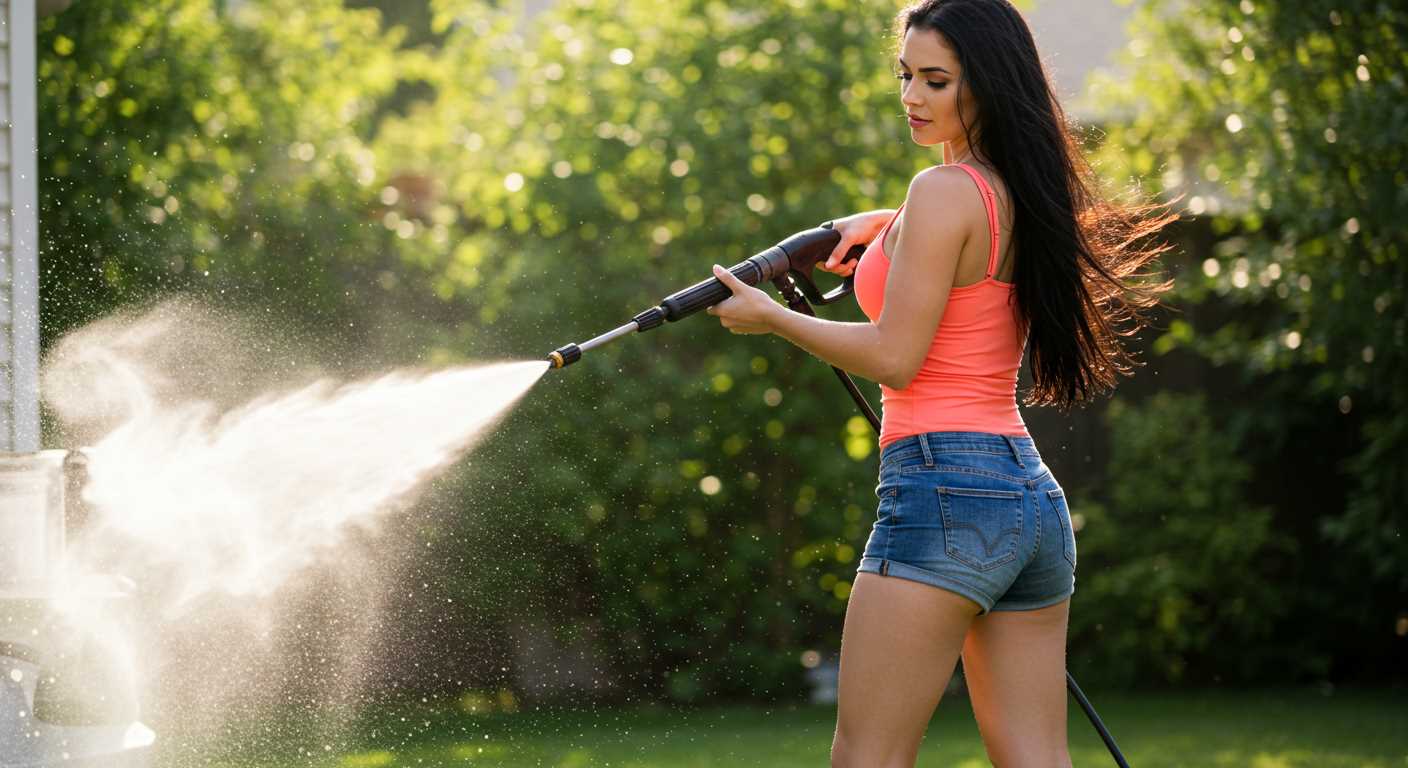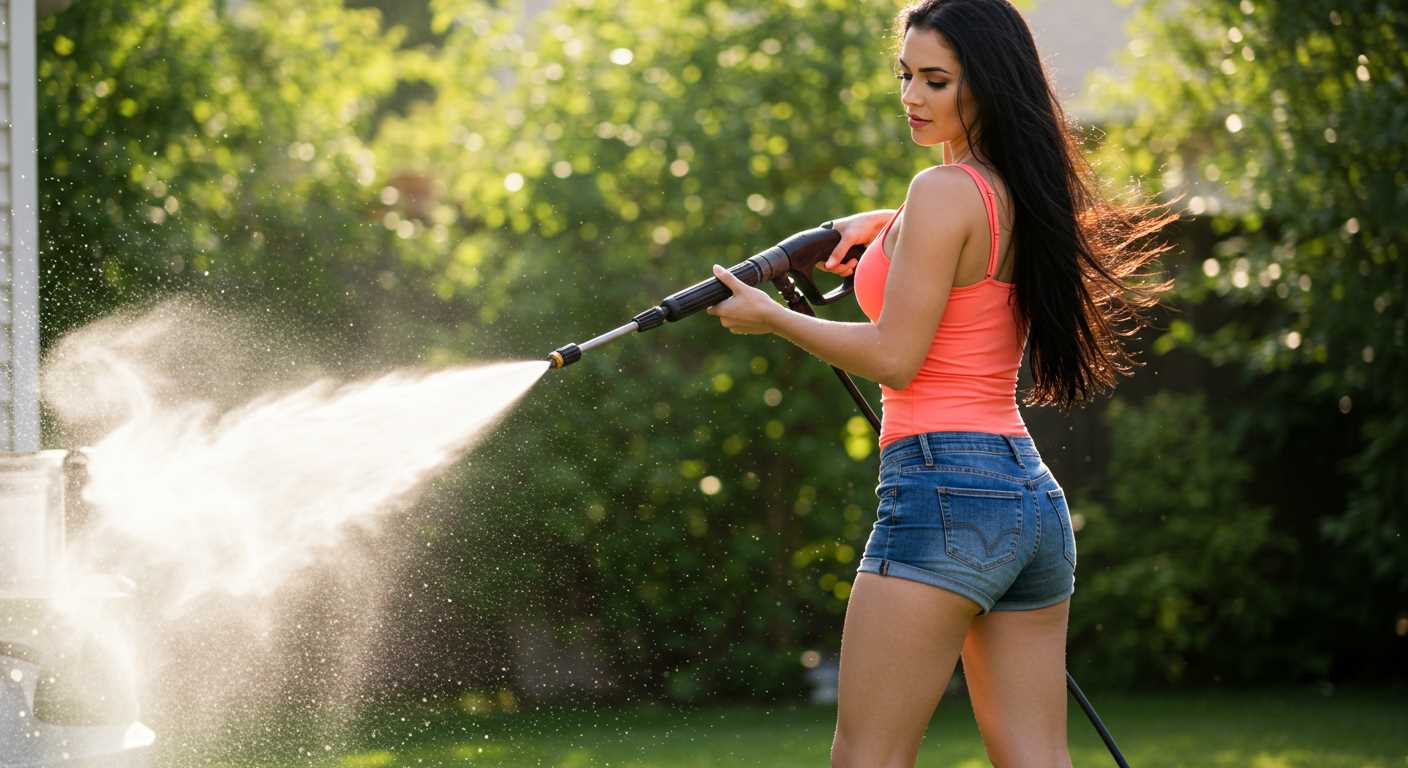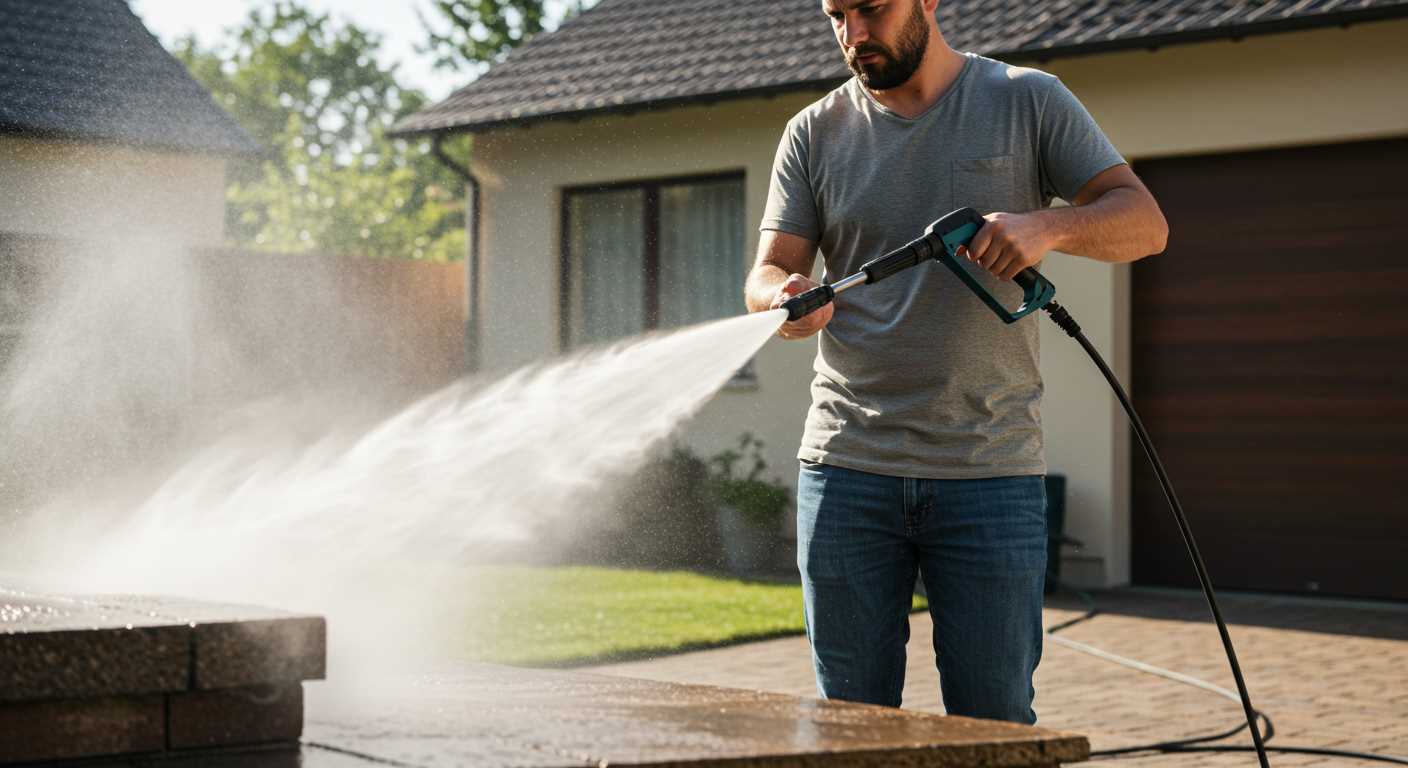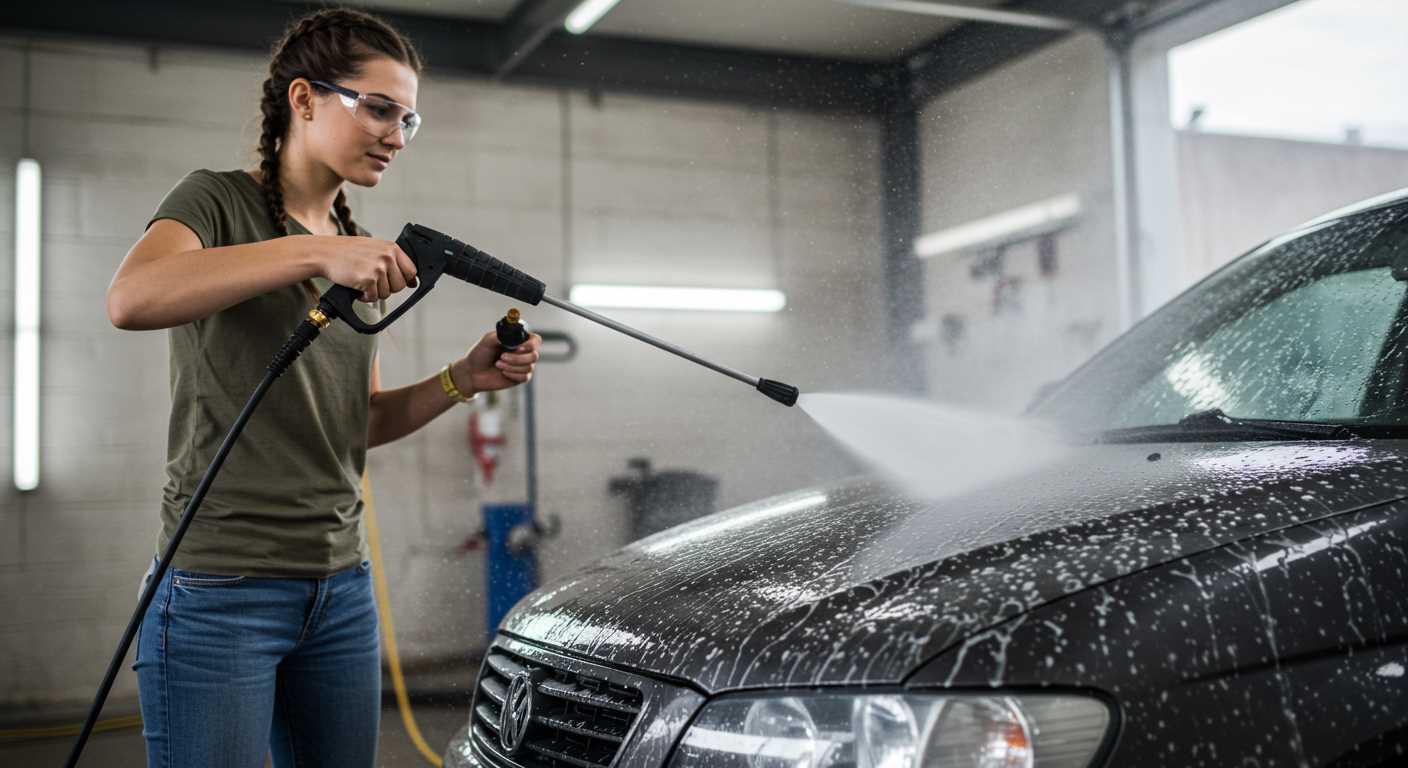


To keep your vehicle looking pristine, a thorough cleaning can work wonders; however, caution is paramount. During my years in the cleaning equipment industry, I encountered numerous instances where high-powered cleaning tools inadvertently caused damage to automotive finishes.
For instance, while testing various models, I noticed that the distance from which the nozzle is used significantly impacts the outcome. A nozzle positioned too close can strip away layers of lacquer, especially on older vehicles or those with less resilient surfaces. I recall one particular case where a client’s classic car suffered scratches due to excessive force applied during cleaning. It’s a lesson learned–distance and technique are vital.
Moreover, the specific nozzle type plays a crucial role. The wrong choice can lead to unintended consequences, such as peeling or dulling of the finish. I often recommend using a wider spray pattern, which distributes the force more evenly and reduces the risk of damage. Always remember to start at a lower setting and gradually increase the intensity, ensuring you maintain control throughout the process.
Lastly, consider the condition of the vehicle’s surface. If there are existing imperfections, such as chips or cracks, those areas are particularly vulnerable. I’ve seen how debris can become projectiles, causing further damage if not carefully monitored. Prioritising a gentle approach can help preserve the integrity of your automotive finish while still achieving that desired clean.
Impact on Automotive Finish
While using high-force cleaning equipment, it’s vital to recognise the potential effects on the exterior layer of your vehicle. I’ve seen vehicles with minor abrasions that were once pristine, all due to improper handling of this equipment.
Specific Risks to the Finish
Here are several ways that intense water jets can harm the outer coating:
- Intensity of Spray: A concentrated stream can strip away layers of finish if held too close. I’ve witnessed this firsthand when a colleague accidentally targeted the same spot for too long.
- Nozzle Choice: The type of nozzle significantly influences the outcome. A narrow nozzle can increase the chance of damage compared to a wider spray, as it focuses the force into a smaller area.
- Distance Matters: Maintaining an appropriate distance is essential. Keeping the nozzle at least two feet away from the surface can help mitigate risk.
Preventive Measures
To protect your vehicle while using high-force cleaning tools, consider these practices:
- Test on an inconspicuous area first to gauge the effect.
- Use a wider spray pattern to reduce impact.
- Adjust pressure settings if the equipment allows it, opting for lower settings for delicate surfaces.
- Avoid targeting edges and seams directly, as these areas are more susceptible to damage.
Being cautious and informed can preserve your vehicle’s aesthetic and value. Experience has taught me that a little attention can save a lot of trouble down the line.
Understanding Pressure Washer Specifications
When choosing a high-pressure cleaning device, focus on the specifications that directly impact performance and safety. Key elements include the force output, nozzle types, and flow rate. Each of these factors plays a significant role in how effectively the equipment can clean surfaces without causing damage.
The most crucial metric is the force output, measured in pounds per square inch (PSI). A unit with a PSI of around 1200-1900 is typically safe for vehicle surfaces, while higher levels can strip coatings. During my tenure, I often encountered machines boasting 3000 PSI or more, perfect for heavy-duty tasks but risky for delicate finishes.
Next, consider the flow rate, indicated in gallons per minute (GPM). A higher flow rate means faster cleaning but can lead to increased surface wear. For automotive applications, a rate of 1.5 to 2.5 GPM strikes a balance between efficiency and safety.
| Specification | Recommended Range for Vehicles | Impact of Exceeding Range |
|---|---|---|
| PSI | 1200 – 1900 | Potential damage to finish |
| GPM | 1.5 – 2.5 | Increased risk of wear |
| Nozzle Type | Adjustable or fan spray | Concentration of force can lead to surface damage |
In my experience, the nozzle type is equally important. An adjustable or fan nozzle allows for a broader spray pattern, which reduces the risk of concentrated pressure on a single point. I recall a colleague using a narrow nozzle on a vehicle, resulting in visible damage to the finish–a lesson learned the hard way.
Selecting the right equipment involves understanding these specifications and their implications. Always refer to the manufacturer’s guidelines to ensure compatibility with your vehicle’s surface, and never hesitate to test on a small, inconspicuous area first. This approach will save you from costly mistakes and preserve your vehicle’s appearance.
Common Paint Types on Vehicles
Automobiles typically feature several common finishes, each with unique properties and vulnerabilities. Recognising these types can help you understand how they react to various cleaning methods.
Solvent-Based Paints
Solvent-based coatings, often referred to as enamel finishes, are popular due to their durability and resistance to environmental factors. They provide a glossy finish but can be prone to chipping if not maintained properly. Regular inspections and timely touch-ups can prevent significant issues.
Water-Based Paints
Water-based options, like acrylic paints, have gained traction for their eco-friendliness. They dry faster and emit fewer volatile organic compounds (VOCs). While they are easier to apply, they may not hold up as well against harsh cleaning techniques. A gentle approach is recommended to preserve their integrity.
Clear Coats are often layered over base paints to enhance shine and protection. These coatings can be particularly susceptible to abrasions. Maintaining a safe distance during cleaning is crucial to avoid dulling the finish.
Understanding your vehicle’s finish allows for better care and cleaning practices, ensuring it remains in excellent condition for years.
How Pressure and Nozzle Type Affect Paint
Choosing the right settings is critical when using high-powered cleaning equipment to maintain vehicle aesthetics. From my experience, water intensity and nozzle selection can significantly influence the outcome. High water force can easily strip off top layers of a vehicle’s surface, especially if the wrong nozzle is used.
Optimal Pressure Settings
In my years of testing various models, I discovered that keeping the output around 1200 to 1900 PSI is often the sweet spot for vehicle maintenance. Anything above this range increases the risk of damaging delicate finishes. Lower settings can effectively remove dirt without compromising the integrity of the coating.
Nozzle Selection
The type of nozzle can make or break your cleaning experience. A wide fan nozzle is preferable for broad surfaces like hoods and roofs, as it disperses the force over a larger area. Conversely, a narrow tip concentrates water flow, which is beneficial for stubborn grime but poses a higher risk of harm. I’ve seen firsthand how using the wrong tip can lead to unpleasant surprises, like peeling or fading.
Identifying Safe Distance for Washing
For optimal results while avoiding damage, maintain a distance of at least 2 to 3 feet from the vehicle’s surface. This range allows for effective cleaning without risking harm to the finish.
During my years in the cleaning equipment industry, I noticed that many users underestimate the power of the stream. At times, I would see individuals standing too close, believing they needed to be right up against the surface for effective cleaning. In reality, this often led to unintended abrasions.
When selecting the distance, consider the following factors:
| Factor | Recommended Distance |
|---|---|
| Standard Nozzle | 2-3 feet |
| Turbo Nozzle | 3-4 feet |
| Wide Spray Nozzle | 1-2 feet |
Using a wider spray nozzle allows for closer proximity without as much risk of damage, while a turbo nozzle requires more distance due to its concentrated stream. Always test a small, inconspicuous area first to gauge the impact.
Adjusting the distance based on the surface condition is also key. For vehicles with older or worn finishes, I recommend increasing that distance to further reduce the risk. Observing the condition of the surface should guide your approach; if in doubt, err on the side of caution.
Remember, maintaining a safe distance not only protects the surface but also enhances the cleaning efficiency, allowing you to achieve the best results without the worry of damaging the vehicle’s exterior.
Potential Risks of Using a Pressure Cleaner
Using a high-powered cleaning device can lead to unintended damage if not handled correctly. During my years in the cleaning equipment industry, I witnessed various scenarios where individuals faced costly repairs due to improper use. One common mistake is using too high of a flow rate, which can strip away protective coatings and expose the underlying material to the elements.
Another risk involves the angle at which the nozzle is held. Directing the spray too closely or at an inappropriate angle can cause significant harm. I recall a customer who aimed the nozzle directly at the edge of their vehicle’s bodywork, resulting in a noticeable indentation. This incident highlights the importance of maintaining a safe distance and adjusting the nozzle appropriately to avoid direct impact.
Furthermore, it’s essential to consider the type of detergent used. Some cleaning solutions can react negatively with specific finishes, leading to discolouration or deterioration. I once encountered a case where a strong alkaline cleaner, combined with aggressive spraying, led to a severely damaged finish on a luxury vehicle. Always verify compatibility before applying any substance.
Lastly, environmental factors like wind can play a role in the effectiveness and safety of the cleaning process. If the wind is strong enough, it can redirect the spray back at you or into unintended areas. I learned this lesson the hard way during a demonstration, where I ended up cleaning more than just the intended surface. Always assess the weather conditions before starting.
Pre-Washing Steps to Protect Vehicle Finish
Before engaging in any cleaning routine, I always recommend a thorough inspection of your automobile’s surface. Look for scratches, swirls, or any blemishes that might be exacerbated during the washing process. If any imperfections are found, consider polishing them out beforehand to ensure a smoother washing experience.
Preparing the area is equally crucial. Choose a shaded spot to avoid water spots from drying prematurely. Sunlight can cause soap and water to evaporate quickly, leaving behind residue that may harm the surface.
Next, gather the right tools. A soft microfiber cloth or mitt is essential for hand washing–these materials are less abrasive and prevent scratching. Use a gentle soap specifically formulated for automotive surfaces, avoiding household cleaners that can be too harsh.
Prior to using any high-intensity equipment, rinse the vehicle with water to remove loose dirt and debris. This helps to prevent grinding grit into the finish during the washing process. A gentle spray from a garden hose can effectively achieve this without the risks associated with stronger devices.
Consider pre-soaking particularly dirty areas, such as wheel wells and lower panels, with a dedicated cleaner. Allow it to sit for a few minutes to break down stubborn grime. This step significantly reduces the need for aggressive scrubbing later.
Finally, ensure all nozzles and attachments are clean and free of debris. A dirty nozzle can inadvertently cause uneven distribution of water, potentially leading to damage.
Taking these preparatory steps will safeguard your automobile’s surface and set the stage for a successful washing experience, minimising the risk of damage while achieving a pristine finish.
Alternative Cleaning Methods for Vehicles
For those looking to maintain their vehicle’s exterior without the risk associated with high-powered equipment, several alternative methods offer effective cleaning solutions.
-
Hand Washing:
This classic method involves using a bucket, sponge, and mild detergent. It allows for targeted cleaning, especially in hard-to-reach areas. Use a soft sponge to avoid scratching the surface.
-
Foam Cannon:
Attaching a foam cannon to a standard garden hose creates a thick layer of foam that clings to the vehicle, breaking down dirt and grime. This method is gentle on surfaces and can be rinsed off easily.
-
Waterless Wash:
For a quick clean, waterless wash products are effective. These sprays encapsulate dirt and allow for easy wiping with a microfiber cloth, perfect for touch-ups or when water access is limited.
-
Steam Cleaning:
Utilising steam to clean is becoming popular. The high temperature sanitises while dissolving grime without the need for harsh chemicals, making it an eco-friendly option.
-
Detailing Sprays:
These sprays are excellent for minor clean-ups and enhancing shine. They can be used after washing to add protection and a glossy finish, ideal for maintaining the vehicle’s appearance.
Each of these methods has its advantages. Hand washing is thorough, while foam cannons and waterless washes offer convenience. Steam cleaning is a great alternative for those seeking an eco-friendly option without sacrificing cleaning power. Always ensure to use soft materials to avoid any surface damage, regardless of the method chosen.
How to Repair Paint Chips on Your Vehicle
To address the issue of damaged finish, begin by cleaning the area thoroughly with soap and water. This ensures no dirt or debris interferes with the repair process.
Materials Needed
- Touch-up paint (matching your vehicle’s colour)
- Clear coat (optional)
- Fine sandpaper (2000 grit)
- Microfiber cloth
- Paintbrush or applicator
- Masking tape
Repair Steps
- Use masking tape to outline the chipped area. This protects the surrounding finish from accidental paint application.
- Gently sand the chipped area with fine sandpaper, just enough to smooth out any rough edges. Wipe away dust with a microfiber cloth.
- Apply the touch-up paint carefully. If using a paintbrush, make sure to apply thin layers, allowing each layer to dry before adding more.
- If desired, apply a clear coat after the touch-up paint has dried completely. This adds a protective layer and helps blend the repair with the surrounding finish.
- Once everything is dry, remove the masking tape and polish the area lightly with a microfiber cloth for a uniform appearance.
For natural options to keep your vehicle clean without relying on high-powered equipment, check out this natural thing to clean slabs without a pressure washer.
Maintaining Your Vehicle’s Finish After Washing
After cleaning, it’s essential to protect the finish of your vehicle. One effective way is to apply a high-quality wax or sealant. This acts as a barrier against contaminants, UV rays, and moisture, helping maintain that showroom shine.
Always ensure the surface is completely dry before application. Use a microfiber cloth for buffing; this reduces the risk of scratching. A good wax will not only enhance the appearance but also make future cleaning easier by preventing dirt from adhering strongly.
Consider using a ceramic coating for long-lasting protection. These coatings bond with the surface, offering superior durability compared to traditional wax. They resist chemicals and environmental factors, making maintenance less frequent.
Regular maintenance is key. Schedule washes every couple of weeks, and inspect the finish for any signs of degradation. If you notice any blemishes or imperfections, address them promptly to prevent further damage. For minor scratches, a polishing compound can help restore the shine.
Don’t forget about the wheels and tyres; they too require attention. Use a dedicated cleaner for tyres, and finish off with a tyre shine product to enhance their look.
Lastly, consider investing in quality tools for cleaning and maintenance. For example, check out the best garden vacuum deals for an effective way to remove debris before washing. Keeping your vehicle in pristine condition requires consistent effort and the right products.





.jpg)


